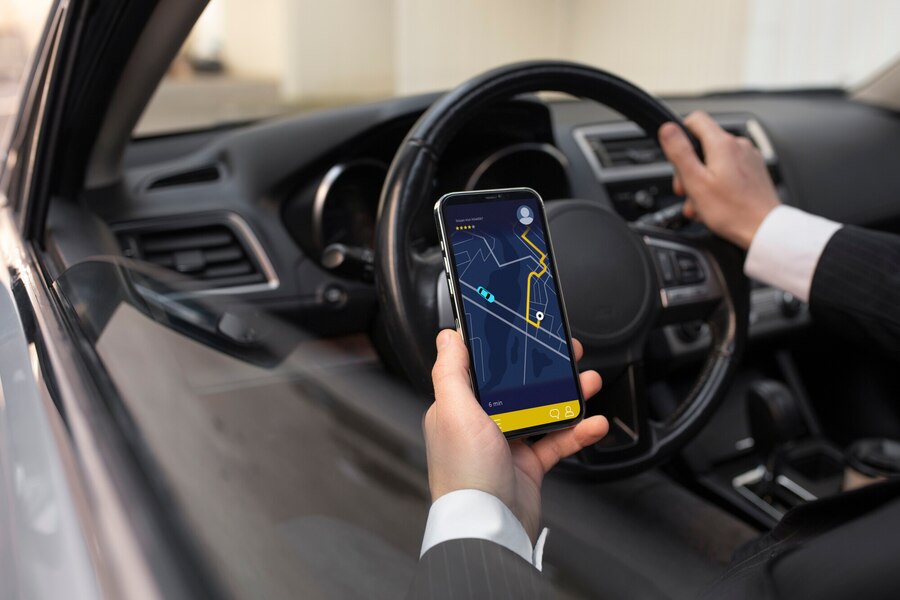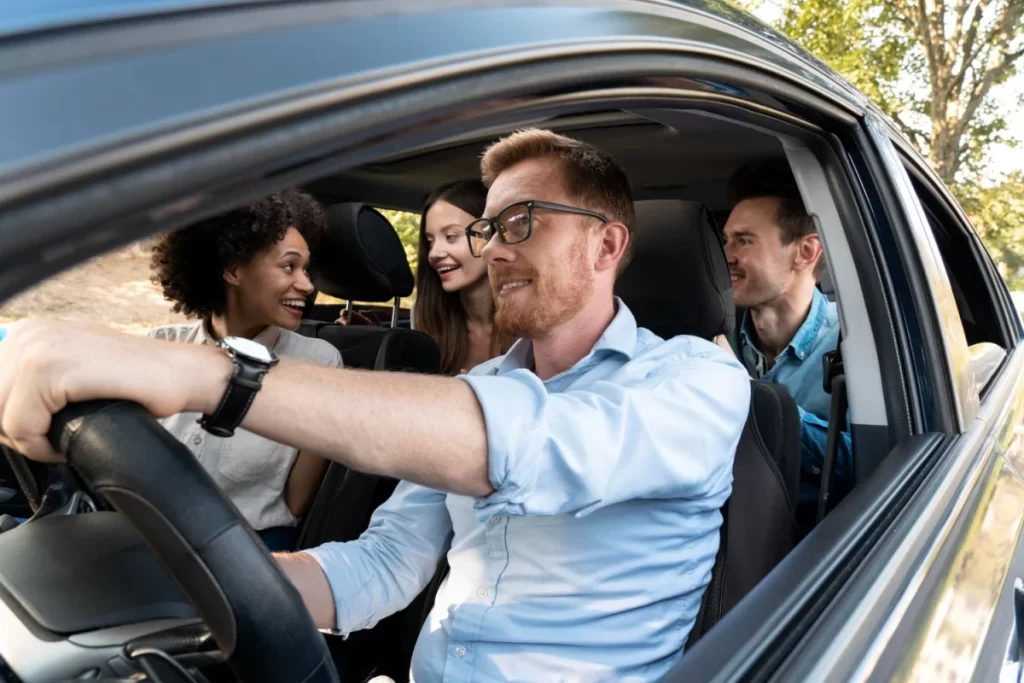Carpooling vs Ridesharing: The Best Choice for Your Daily Commute

Are you tired of the daily grind of commuting? Looking for a way to make your daily travel more affordable, eco-friendly, and stress-free? You’re not alone. Many people are exploring carpooling and ridesharing as alternatives to solo driving. But which one is the best choice for your daily commute? Let’s dive into the world of carpooling and ridesharing to find out.
Understanding Carpooling and Ridesharing
Before we delve into the specifics, let’s clarify what carpooling and ridesharing actually mean. Both involve sharing a ride, but there are key differences.
The Basics of Carpooling
Carpooling involves a group of people traveling together in one car to the same destination or along the same route. Typically, the group consists of colleagues, neighbors, or friends who take turns driving. Carpooling is often organized on a long-term basis, such as for daily commutes to work or school.
The Basics of Ridesharing
Ridesharing, on the other hand, generally refers to using a service that connects drivers with passengers through an app. Companies like Uber and Lyft are prime examples. Ridesharing is more flexible and usually involves paying the driver for each ride.
Cost Comparison
One of the biggest factors in choosing between carpooling and ridesharing is cost. Let’s break it down.
Carpooling Costs
Carpooling is usually more cost-effective because the expenses are shared among all participants. Costs include fuel, tolls, and possibly vehicle maintenance. Since the driving duties are often rotated, there’s also the benefit of sharing vehicle wear and tear.
Ridesharing Costs
Ridesharing tends to be more expensive on a per-ride basis. You pay for the convenience and flexibility of on-demand service, which includes a fare calculated based on distance and time, plus any additional fees like surge pricing.

Environmental Impact
With growing concerns about climate change, the environmental impact of our commuting choices is crucial.
Carpooling and the Environment
Carpooling significantly reduces the number of vehicles on the road, leading to lower greenhouse gas emissions. By sharing rides, you’re contributing to less traffic congestion and better air quality.
Ridesharing and the Environment
Ridesharing also helps reduce the number of cars on the road but to a lesser extent. Many ridesharing trips involve solo passengers, which doesn’t maximize the potential environmental benefits as much as carpooling does.
Convenience and Flexibility
How convenient and flexible are carpooling and ridesharing for your daily commute?
Carpooling Convenience
Carpooling requires coordination and a fixed schedule. While this can be a drawback, it also means having a reliable routine. If everyone sticks to the plan, you can enjoy a hassle-free commute.
Ridesharing Flexibility
Ridesharing excels in flexibility. You can request a ride at any time that suits you, making it ideal for unpredictable schedules. However, this flexibility comes at a higher cost.
Safety Considerations
Safety is paramount when choosing how to commute. Let’s compare the safety aspects of carpooling and ridesharing.
Carpooling Safety
Carpooling is generally considered safe, especially when traveling with known individuals like coworkers or neighbors. Trust and familiarity play a significant role here.
Ridesharing Safety
Ridesharing services have implemented safety measures such as driver background checks, real-time tracking, and in-app emergency features. Despite these, there are still concerns about riding with strangers.
Social Benefits
Commuting isn’t just about getting from point A to point B; it’s also a social experience.
Carpooling Social Benefits
Carpooling fosters a sense of community. You get to know your fellow carpoolers better, which can lead to stronger social bonds and networking opportunities.
Ridesharing Social Benefits
Ridesharing offers a chance to meet new people, but the social interaction is usually brief. It’s more transactional and less about building long-term relationships.
Technology and Accessibility
Technology plays a big role in making carpooling and ridesharing accessible.
Carpooling Technology
Many carpooling arrangements are still organized informally, but there are apps and websites like STARTARIDE that help connect people with similar routes. These tools can simplify the process of finding and managing carpool groups.
Ridesharing Technology
Ridesharing is heavily reliant on technology. Apps like Uber and Lyft make it incredibly easy to book, track, and pay for rides. They also offer features like ride history and feedback systems to enhance user experience.
Which One is Right for You?
Choosing between carpooling and ridesharing depends on your specific needs and circumstances.
Consider Your Schedule
If you have a consistent daily schedule, carpooling might be the better option. It’s cost-effective and environmentally friendly. However, if your schedule is unpredictable, ridesharing offers the flexibility you need.
Assess Your Budget
Budget is another critical factor. If you’re looking to save money, carpooling is generally cheaper. But if convenience and time-saving are more important, you might be willing to pay extra for ridesharing.
Real-Life Success Stories
Hearing from others can provide valuable insights.
Carpooling Success
Take Jane, for example. She started carpooling with colleagues and found that not only did she save money, but she also made new friends and reduced her stress levels during the commute.
Ridesharing Success
Then there’s Mike, who uses ridesharing due to his irregular work hours. He appreciates the convenience and the ability to catch up on emails during the ride, making his day more productive.
Tips for Effective Carpooling
Want to make the most out of carpooling? Here are some tips.
Establish Clear Rules
Set guidelines for punctuality, driving rotations, and cost-sharing to ensure everyone is on the same page.
Use Technology
Utilize apps like STARTARIDE to coordinate schedules and communicate easily with your carpool group.
Tips for Effective Ridesharing
Maximize your ridesharing experience with these suggestions.
Plan Ahead
Book rides in advance when possible to avoid surge pricing and ensure availability.
Stay Safe
Always verify the driver’s details and share your trip information with a friend or family member.
Conclusion
In the debate between carpooling and ridesharing, there’s no one-size-fits-all answer. Both options have their advantages and disadvantages, and the best choice depends on your personal needs, budget, and lifestyle. By understanding these factors, you can make a more informed decision that will enhance your daily commute.
FAQs
What is the main difference between carpooling and ridesharing?
Carpooling involves sharing a ride with a group of people you know, usually on a regular schedule, while ridesharing connects you with drivers through an app for one-off trips.
Which is cheaper: carpooling or ridesharing?
Carpooling is generally cheaper because the costs are shared among several people, whereas ridesharing often involves paying a driver for each individual trip.
Is carpooling safer than ridesharing?
Safety in carpooling typically comes from traveling with known individuals. Ridesharing has safety measures in place, but involves riding with strangers, which may pose some risks.
How does carpooling help the environment?
Carpooling reduces the number of cars on the road, leading to lower greenhouse gas emissions and less traffic congestion.
Can I use technology to organize carpooling? Yes, there are apps like STARTARIDE and websites designed to help people find and manage carpool groups, making the process.


